The efficacy, function and Edible method of Rabdosia angustifolia
The potted grass is the whole grass of the crassulaceae plant, which is nicknamed Dog Tooth, Scutellaria barbata, Scutellaria angustifolia, Rabdosia angustifolia, and its efficacy: clearing heat and detoxification, clearing away dampness and heat. Do you understand its efficacy and other related knowledge? Now let me introduce it to you in detail.
First, the efficacy, function and edible method of potted grass.
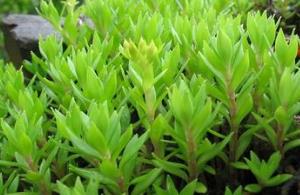
First, the efficacy of weeping potted grass
Efficacy: clearing heat and detoxification, clearing damp-heat, reducing glutamic pyruvic transaminase.
Indications: clearing damp-heat, detoxification, damp-heat jaundice, diarrhea, diarrhea, sore throat, carbuncle, eczema, scald, insect and snake bite, hemoptysis, hemoptysis. Acute and chronic hepatitis. For damp-heat jaundice. It can detoxify and remove dampness and yellow. It is often used with turmeric, Artemisia annua and Artemisia annua. It is used for carbuncle swelling, snake bite, hot wound and so on. It can clear away heat and detoxify. Can only use fresh products to wash, mash and take juice clothes. And apply locally with juice or dregs.
Second, the function of weeping pot grass:
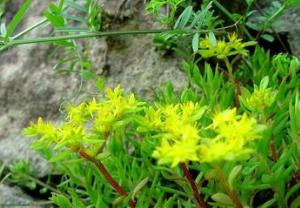
Potted grass can clear damp-heat and detoxify. Herb is used for damp-heat jaundice, adverse urination, carbuncle, sores and ulcers, acute and chronic hepatitis. Trifolium przewalskii has the effect of reducing glutamic pyruvic transaminase. Tripterygium is used for the activity of acute hepatitis, persistent hepatitis and chronic hepatitis.
1, weeping potted grass for water-fire scald and carbuncle wound ulcer and other symptoms: this product has a good heat-clearing and detoxification effect, for water-fire scald, can be washed with fresh grass pounding juice external application; for carbuncle swelling at the beginning, in addition to decoction soup, while using fresh grass to wash and mash external application, can also reduce carbuncle and detumescence.
2. After being bitten by poisonous snakes, perpendicular herbs are generally used to treat animal bites. After being bitten by poisonous snakes, the wound is disinfected first, and the "eight wind acupoints" or "eight evil acupoints" are needled between the swollen fingers or toes with a three-pronged or thick needle, and the detoxification is taken internally through acupuncture. Then, the fresh potted grass smashed in advance is applied externally around the wound, and the dressing is changed twice a day for several days.
3. Weeping potted grass is used for venomous snakebites: hanging potted grass is good at relieving snake venom and is a common medicine for folk treatment of poisonous snake bites. it can be used only with half a jin of fresh grass, washed with cold boiled water and smashed with strangled juice once or twice a day; it can also be taken internally with Scutellaria barbata, wild chrysanthemum, Bidens bites, plantain, raw rhubarb and other herbs, and washed and mashed with fresh grass for external application.
4. Perpendicular potted grass is used to treat burn wounds, carbuncle swelling, mastitis, mumps, erysipelas, scar furuncle, etc., generally collect fresh grass, wash clean, mash external application, change twice a day, and heal in a few days.
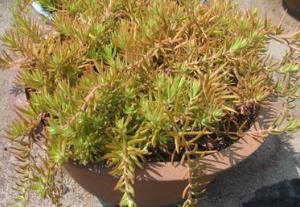
5. Herb is used for infectious hepatitis: in recent years, this product has been used alone in the treatment of infectious hepatitis (including acute icteric hepatitis, acute non-icteric hepatitis, and persistent hepatitis, the active stage of chronic hepatitis). It plays a certain role in reducing serum transaminase, and can reduce or eliminate damp-heat symptoms such as bitterness, poor appetite, yellow red urine and so on. Add an appropriate amount of fresh potted grass into walnut oil and soju, smash and apply.
6. Herba Scutellariae is used to treat liver cancer. Weeping pot grass, Scutellaria barbata, raw corrugated, stone swallow each 30 grams, leaking lotus, Coix seed 15 grams each, Angelica sinensis, Salvia miltiorrhiza, safflower each 9 grams, August Zha, Radix Paeoniae Alba, tangerine peel each 6 grams of water fried 3 times, 1 dose a day. It can eliminate the symptoms and reduce the liver swelling.
7, anti-inflammatory and detumescent, for inflammatory swelling: cellulitis, 50% ointment with Vaseline, local external application.
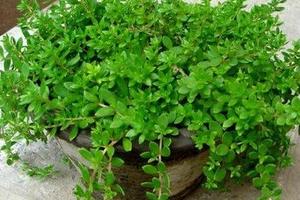
8. Herba Euphorbiae to treat leukemia. Weeping potted grass, pig calamity each 30 grams, sheep's foot, Hedyotis diffusa, purple grass, raw land, Rhizoma Polygonatum each 15 grams, Angelica, Salvia miltiorrhiza. 9 grams of Radix Paeoniae Rubra and 6 grams of Ligusticum chuanxiong and licorice respectively. It can completely or partially relieve the clinical symptoms. It is suitable for all acute types.
9. Herba Rehmanniae in the treatment of nasopharyngeal carcinoma. Smash some fresh potted grass and apply it externally, once or twice a day. In addition, take rushes and mash them. At the same time: wild Qiaomai, Han Fangji, Achyranthes bidentata each 30 grams are used fresh, fried. Continue to use until the nasopharyngeal tumor disappears and the symptoms are cured in the near future.
10. Herba Scutellariae is used to treat lung cancer. Weeping potted grass, white English each 30 grams, water frying service, 1 dose a day. Persisting in taking it can improve the condition, the clinical symptoms basically disappear, and the focus gradually shrinks.

Third, the dietotherapy method of weeping potted grass
The hanging potted grass is suitable for the crowd: those with spleen deficiency and diarrhea should be taken with caution.
The dietotherapy effect of hanging potted grass: it tastes sweet, light and cool; it can return to the meridians of liver, stomach and large intestine; it has the effect of clearing heat and dampness, detoxification and detumescence, cooling blood and hemostasis; it is mainly used to treat damp-heat jaundice, diarrhea, diarrhea, sore throat, carbuncle, eczema, scald, insect snake bite, hemoptysis, hemoptysis, urine blood.
Usage and dosage
Internal service: fried soup, 15Mui 30g; fresh 50Mel 100g; or tampering with juice. External use: appropriate amount, mash application; or research to adjust the application; or take juice for external application; or frying water wet compress.
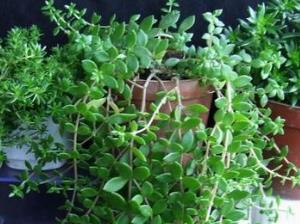
Second, the difference between Buddha nail grass and weeping pot grass.
1. Sedum: sedum is a perennial herb, also known as perennial grass, Buddha fingernail, half branch company, etc. (common name is OK, because one kind of flower is different from place to place, and a common name will be called two kinds of flowers.) the leaves of sedum are narrow and have a sense of roundness. 2. Potted grass: Sedum is a succulent plant of the family Sedum, which is more common in rural areas like sedum, which is often called dog tooth flap and stone vegetable in rural areas. it is a common herb widely spread among the people, and the whole grass is used as medicine. it has the effects of heat-clearing and detoxification, detumescence, diuresis, purulent muscle and so on. The leaves are broad and flat relative to the verdant grass.
Third, the dietotherapy method of weeping potted grass
The hanging potted grass is suitable for the crowd: those with spleen deficiency and diarrhea should be taken with caution.
The dietotherapy effect of hanging potted grass: it tastes sweet, light and cool; it can return to the meridians of liver, stomach and large intestine; it has the effect of clearing heat and dampness, detoxification and detumescence, cooling blood and hemostasis; it is mainly used to treat damp-heat jaundice, diarrhea, diarrhea, sore throat, carbuncle, eczema, scald, insect snake bite, hemoptysis, hemoptysis, urine blood.
Usage and dosage
Internal service: fried soup, 15Mui 30g; fresh 50Mel 100g; or tampering with juice. External use: appropriate amount, mash application; or research to adjust the application; or take juice for external application; or frying water wet compress.

Second, the difference between Buddha nail grass and weeping pot grass.
1. Sedum: sedum is a perennial herb, also known as perennial grass, Buddha fingernail, half branch company, etc. (common name is OK, because one kind of flower is different from place to place, and a common name will be called two kinds of flowers.) the leaves of sedum are narrow and have a sense of roundness. 2. Potted grass: Sedum is a succulent plant of the family Sedum, which is more common in rural areas like sedum, which is often called dog tooth flap and stone vegetable in rural areas. it is a common herb widely spread among the people, and the whole grass is used as medicine. it has the effects of heat-clearing and detoxification, detumescence, diuresis, purulent muscle and so on. The leaves are broad and flat relative to the verdant grass.
- Prev

What is rosemary? can you eat rosemary?
What is rosemary? can you eat rosemary?
- Next

Culture methods and matters needing attention of pearl orchid can pearl orchid be hydroponically cultured
Culture methods and matters needing attention of pearl orchid can pearl orchid be hydroponically cultured
Related
- Wuhan Hospital Iron Tree Blooming Result Was Instantly Frightened by the Gardener Master
- Which variety of camellia is the most fragrant and best? Which one do you like best?
- What is the small blue coat, the breeding methods and matters needing attention of the succulent plant
- Dormancy time and maintenance management of succulent plants during dormancy
- Minas succulent how to raise, Minas succulent plant pictures
- What are the varieties of winter succulent plants
- How to raise succulent plants in twelve rolls? let's take a look at some experience of breeding twelve rolls.
- Attention should be paid to water control for succulent plants during dormant period (winter and summer)
- Watering experience of twelve rolls of succulent plants
- Techniques for fertilizing succulent plants. An article will let you know how to fertilize succulent plants.

